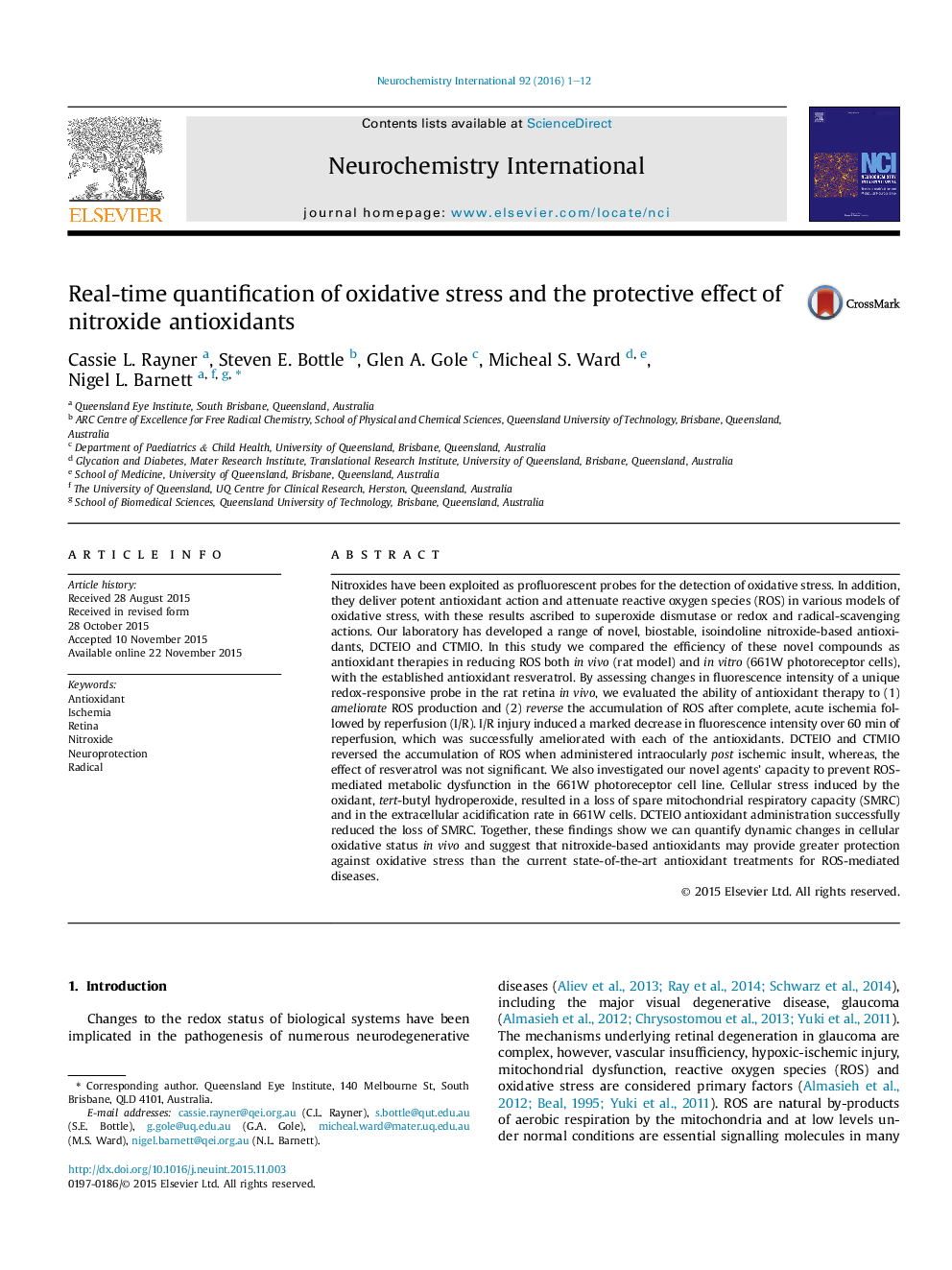| کد مقاله | کد نشریه | سال انتشار | مقاله انگلیسی | نسخه تمام متن |
|---|---|---|---|---|
| 2200368 | 1551283 | 2016 | 12 صفحه PDF | دانلود رایگان |
• Reversible fluorescent probe can quantify oxidative stress dynamically, in vivo.
• Antioxidants ameliorate the change in fluorescence induced by ischaemia/reperfusion.
• Nitroxide antioxidants reverse accumulation of ROS when administered post insult.
• Oxidative stress results in a loss of spare mitochondrial respiratory capacity (SMRC).
• DCTEIO nitroxide antioxidant successfully reduced the loss in SMRC.
Nitroxides have been exploited as profluorescent probes for the detection of oxidative stress. In addition, they deliver potent antioxidant action and attenuate reactive oxygen species (ROS) in various models of oxidative stress, with these results ascribed to superoxide dismutase or redox and radical-scavenging actions. Our laboratory has developed a range of novel, biostable, isoindoline nitroxide-based antioxidants, DCTEIO and CTMIO. In this study we compared the efficiency of these novel compounds as antioxidant therapies in reducing ROS both in vivo (rat model) and in vitro (661W photoreceptor cells), with the established antioxidant resveratrol. By assessing changes in fluorescence intensity of a unique redox-responsive probe in the rat retina in vivo, we evaluated the ability of antioxidant therapy to (1) ameliorate ROS production and (2) reverse the accumulation of ROS after complete, acute ischemia followed by reperfusion (I/R). I/R injury induced a marked decrease in fluorescence intensity over 60 min of reperfusion, which was successfully ameliorated with each of the antioxidants. DCTEIO and CTMIO reversed the accumulation of ROS when administered intraocularly post ischemic insult, whereas, the effect of resveratrol was not significant. We also investigated our novel agents’ capacity to prevent ROS-mediated metabolic dysfunction in the 661W photoreceptor cell line. Cellular stress induced by the oxidant, tert-butyl hydroperoxide, resulted in a loss of spare mitochondrial respiratory capacity (SMRC) and in the extracellular acidification rate in 661W cells. DCTEIO antioxidant administration successfully reduced the loss of SMRC. Together, these findings show we can quantify dynamic changes in cellular oxidative status in vivo and suggest that nitroxide-based antioxidants may provide greater protection against oxidative stress than the current state-of-the-art antioxidant treatments for ROS-mediated diseases.
Journal: Neurochemistry International - Volume 92, January 2016, Pages 1–12
